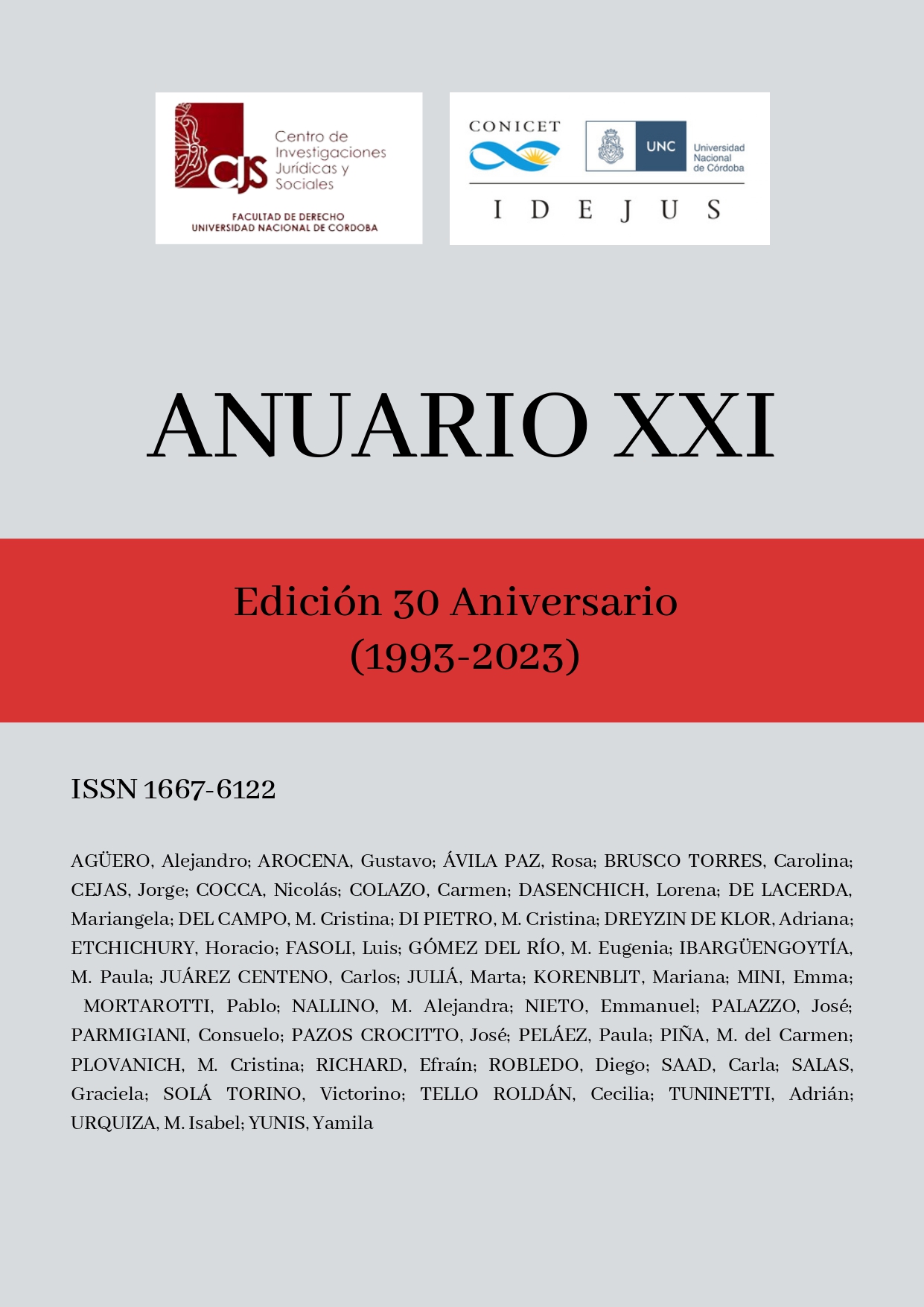THE LAW AS A GENDER(S) CREATIVE STRATEGY AND ITS IMPACT ON ACCESS TO JUSTICE IN TWO CASES OF TRAVESTICIDE (CÓRDOBAAND BUENOS AIRES)
Keywords:
Transvesticide, Femicide, Transfeminism, Intersectionality, Participatory Action Research (PAR).Abstract
We started from judicial experiences of access to justice in sentences that recognized the sex-gender identity of trans* victims of gender violence and hate crimes. In parallel, a Participatory Action Research (PAR) methodology was used to address the self-management strategies of a trans* organization. The research shows the need to deepen the relationship between a judicial system that responds in articulation with other areas of the State as well as with civil society and the organized community, and the importance of the intersectional perspective as a methodology, theory and policy.
Downloads
References
ALMENDRA, J. C. (2015). La importancia de la interseccionalidad para la investigación feminista. Oxímora revista internacional de ética y política, (7), 119-137.
BUTLER, J. (2008). Cuerpos que importan: Sobre los limites materiales y discursivos del “sexo”. Buenos Aires: Paidós.
CEJIL (2013). Diagnóstico sobre los crímenes de odio motivados por la orientación sexual e identidad de género en Costa Rica, Honduras y Nicaragua. Coordinación del Centro por la Justicia y el Derecho Internacional CEJIL. San José, C.R.
HARAWAY, D. (1984). Manifiesto Ciborg: El sueño irónico de un lenguaje común para las mujeres en el circuito integrado.
MOLAR, A. Y GASTIAZORO, M. E. (2022). Estrategias autogestivas de comunidades trans en la ciudad de Córdoba (Argentina) en el marco de pandemia Covid-19. Investigaciones Feministas, 13(1), 149-161. https://doi.org/10.5209/infe.77890
RADI, B. (2019). Políticas del conocimiento: hacia una epistemología trans*. En López, Mariano Los mil pequeños sexos. Intervenciones críticas sobre políticas de género y sexualidades. Sáenz Peña (Argentina): EDUNTREF.
SÁNCHEZ BUSSO, M. (2015). Respuestas Judiciales a la Violencia de Género: el Derecho como Discurso y Práctica Sociales. Oñati Socio-legal Series, 5(2), 785-803.
SMART, C. (2000). La teoría feminista y el discurso jurídico. En Haidée Birgin (Ed.): El Derecho en el Género y el Género en el Derecho (pp. 9-18). Buenos Aires: Biblós.
UFEM (2016). Homicidios agravados por razones de género: femicidios y crímenes de odio. Análisis de la aplicación de la ley 26791. https://www.mpf.gob.ar/ufem/files/2016/09/UFEM-Homicidios-agravados-por-razonesde-g%C3%A9nero_Femicidios-cr%C3%ADmenes-de-odio.pdf
UFEM (2019). Instrumento para la medición de femicidios, transfemicidios y travesticidios. Una propuesta para la construcción de información criminal con perspectiva de género. https://www.mpf.gob.ar/ufem/files/2018/10/Instrumento-de-medici%C3%B3n.-Versi%
C3%B3n-FINAL.pdf
UFEM (2020). Travesticidio de Amancay Diana Sacayan. Documento de buenas prácticas de intervención fiscal. https://www.mpf.gob.ar/ufem/files/2020/10/Informe-Sacayan.pdf
VIGOYA, M. V. (2016). La interseccionalidad: una aproximación situada a la dominación. Debate feminista, 52, 1-17.
Downloads
Published
How to Cite
Issue
Section
License

This work is licensed under a Creative Commons Attribution-NonCommercial-ShareAlike 4.0 International License.


